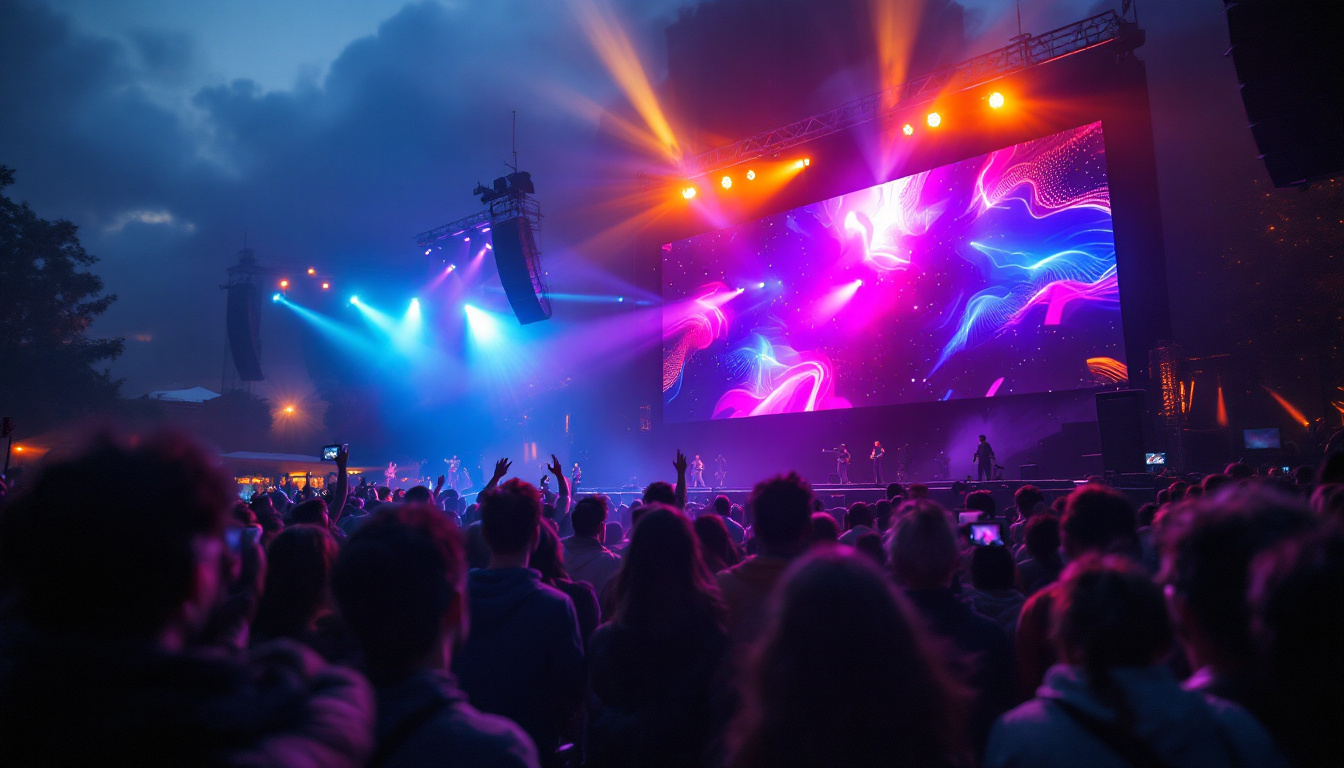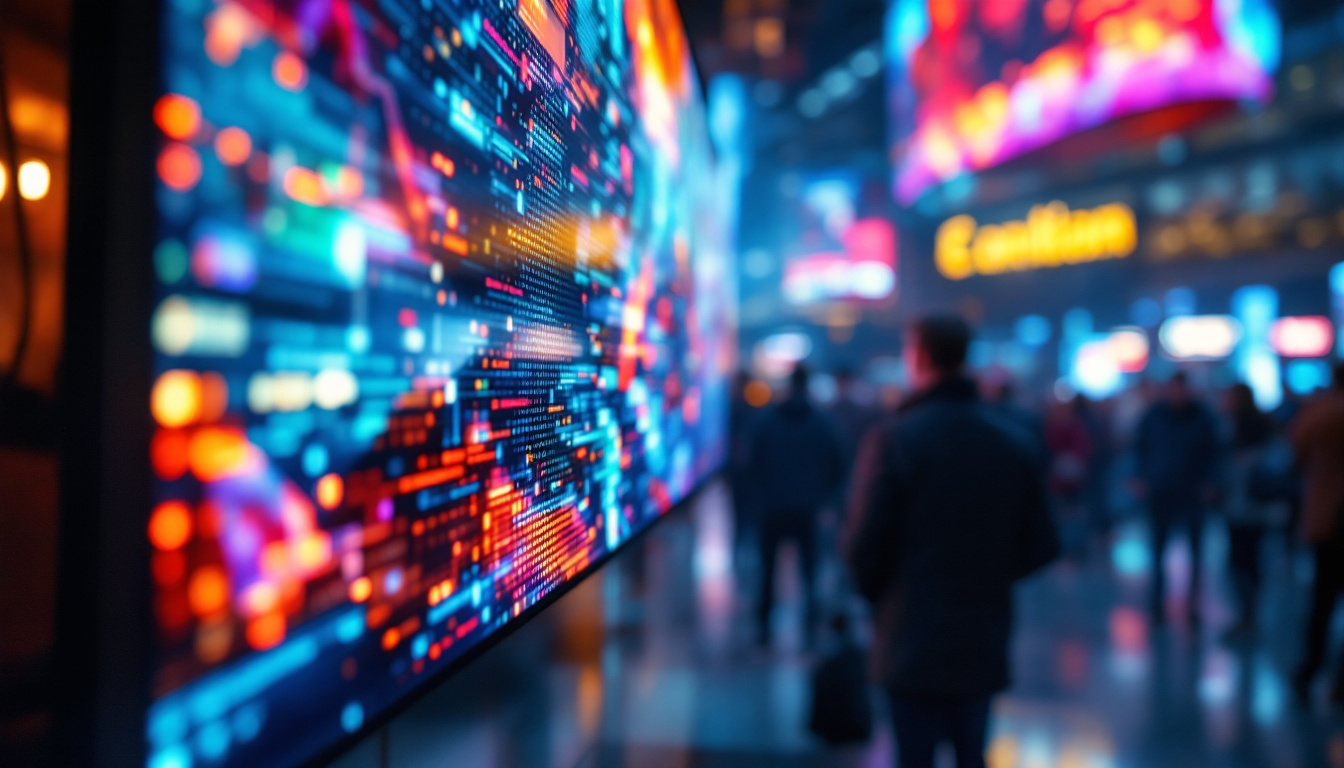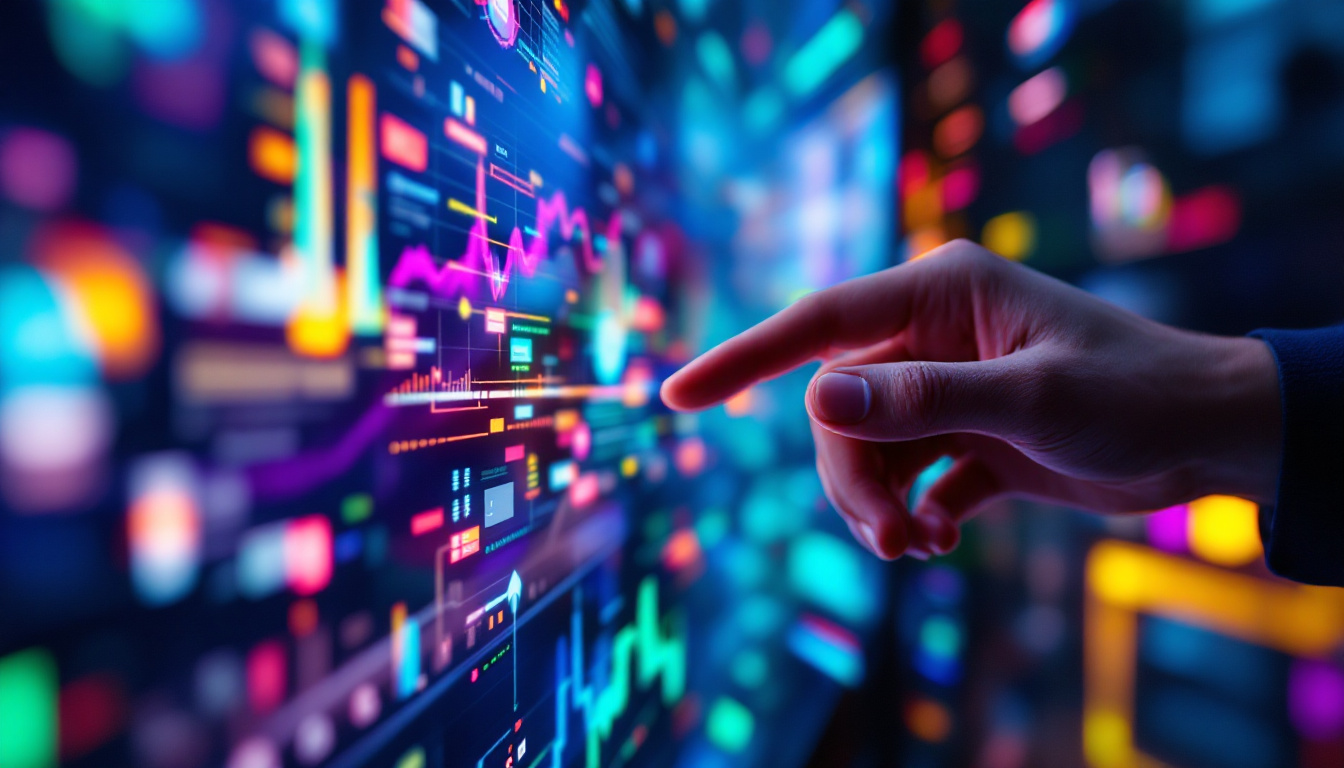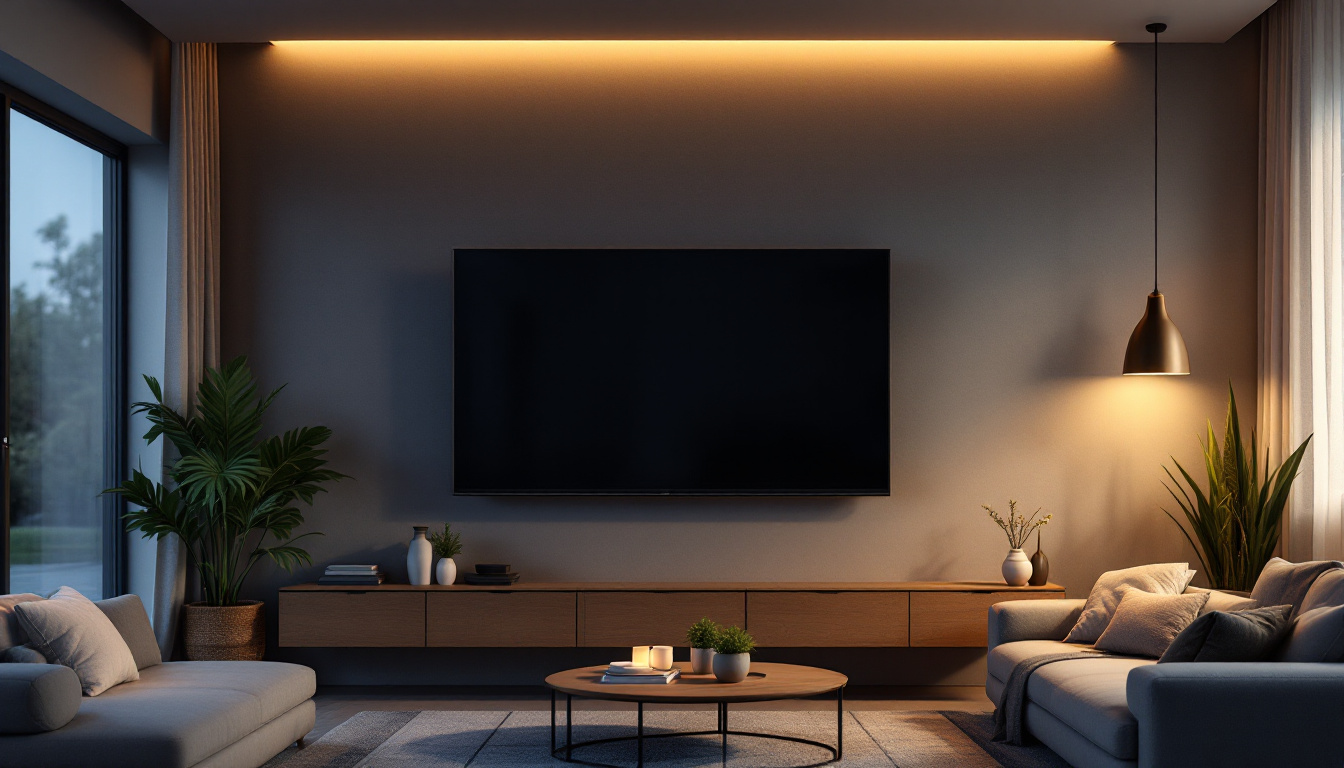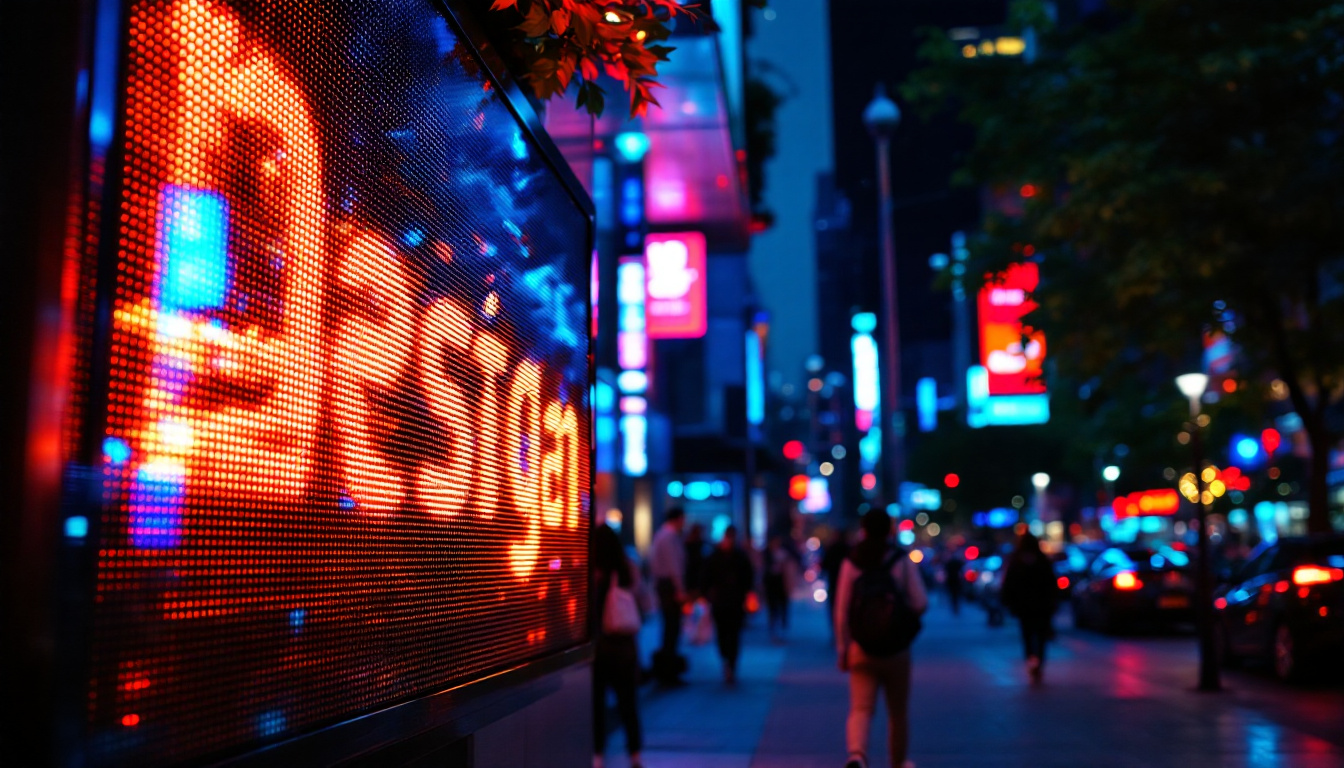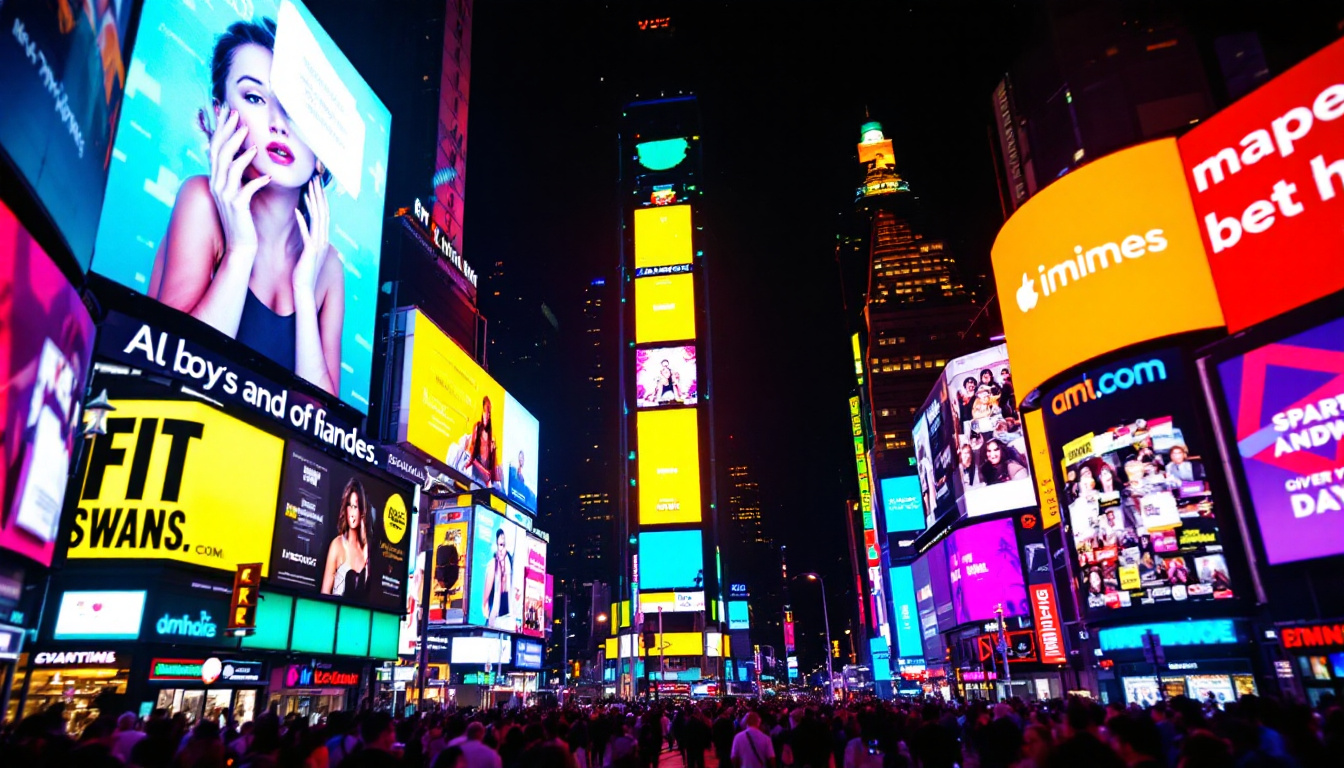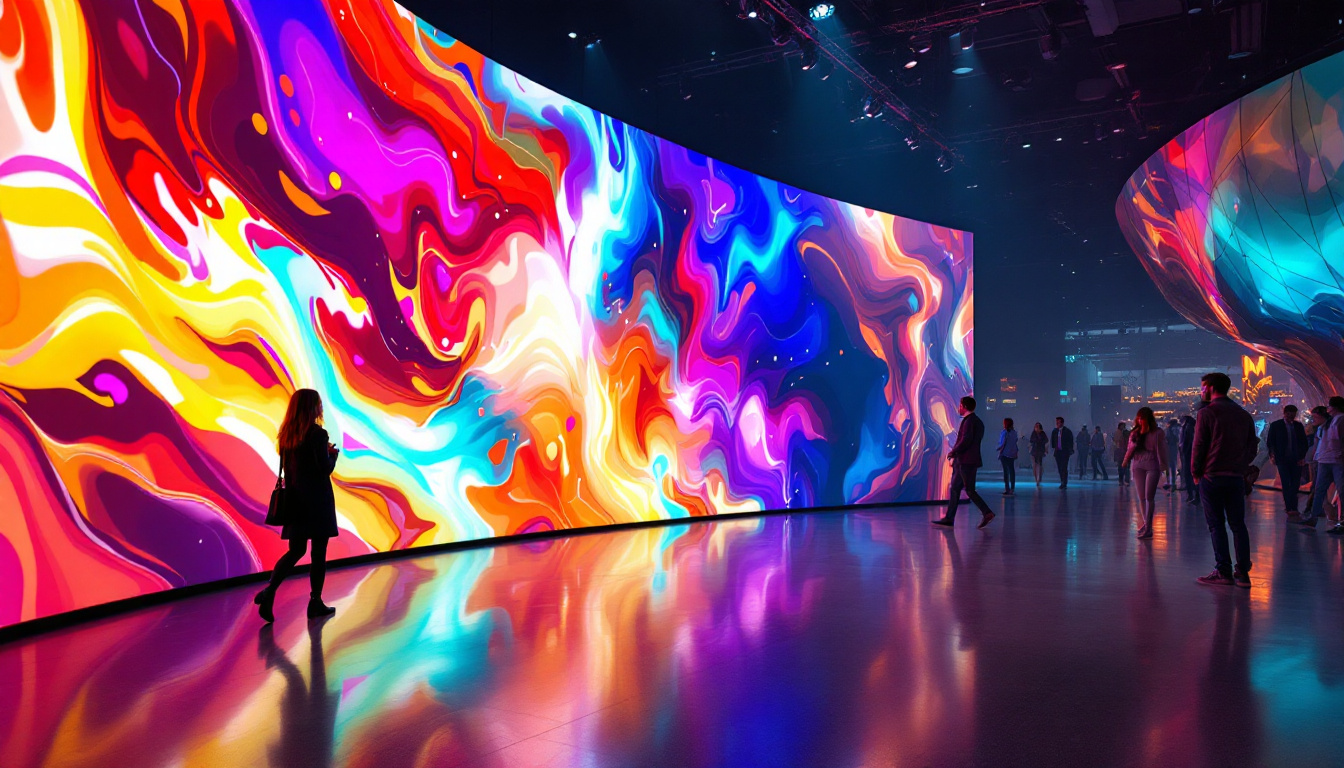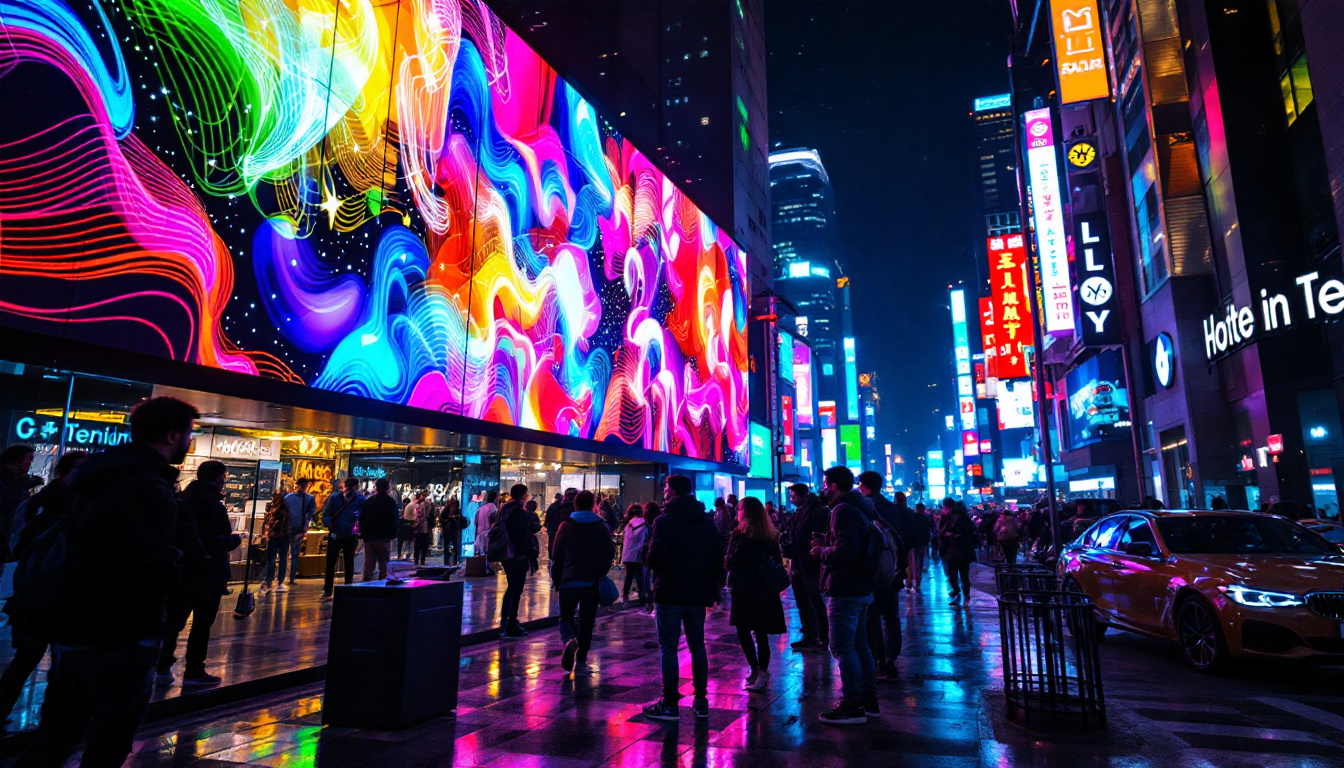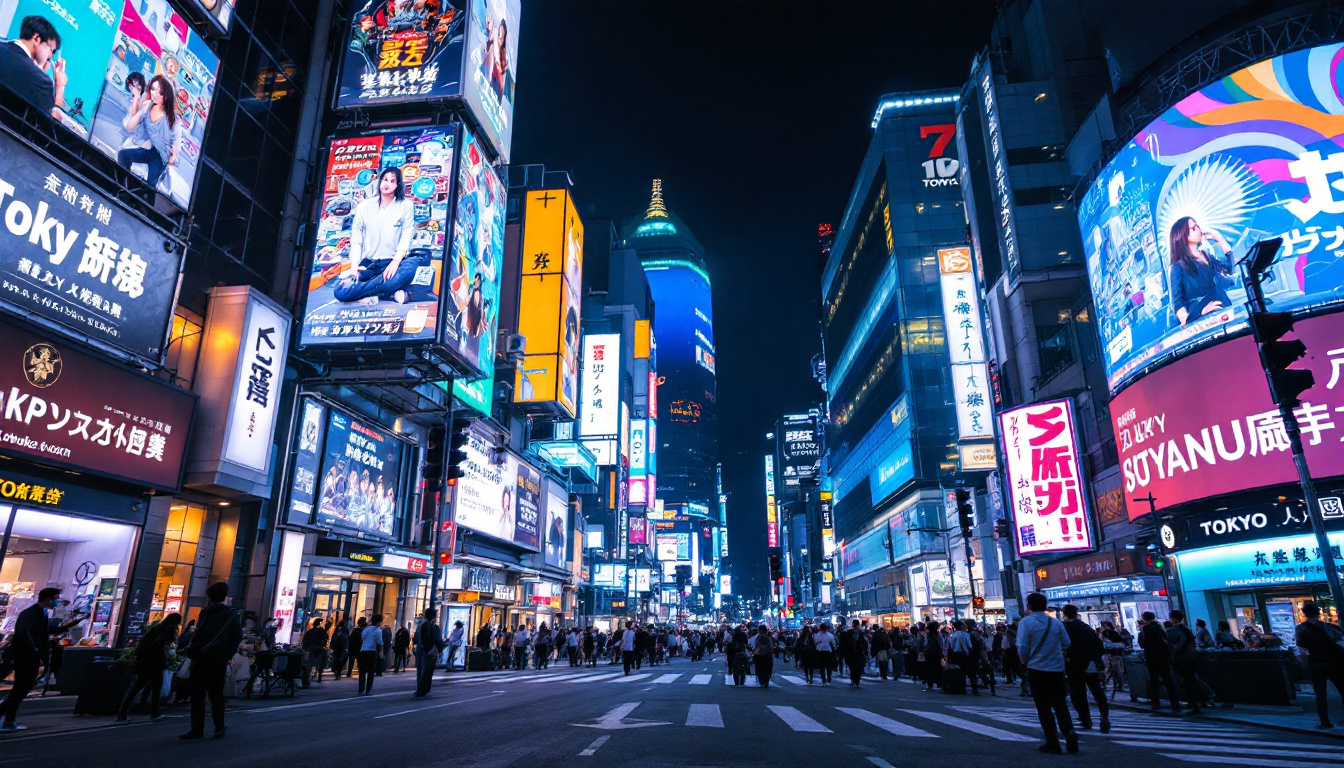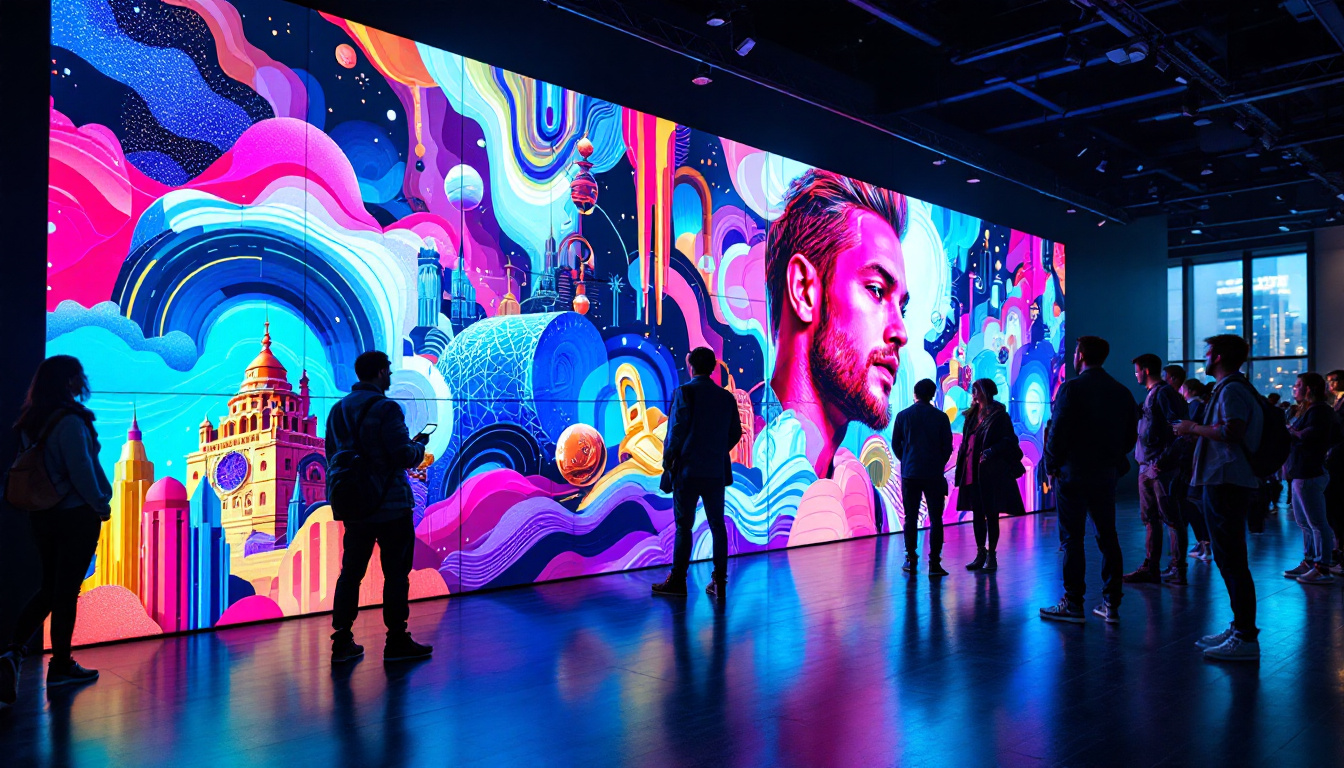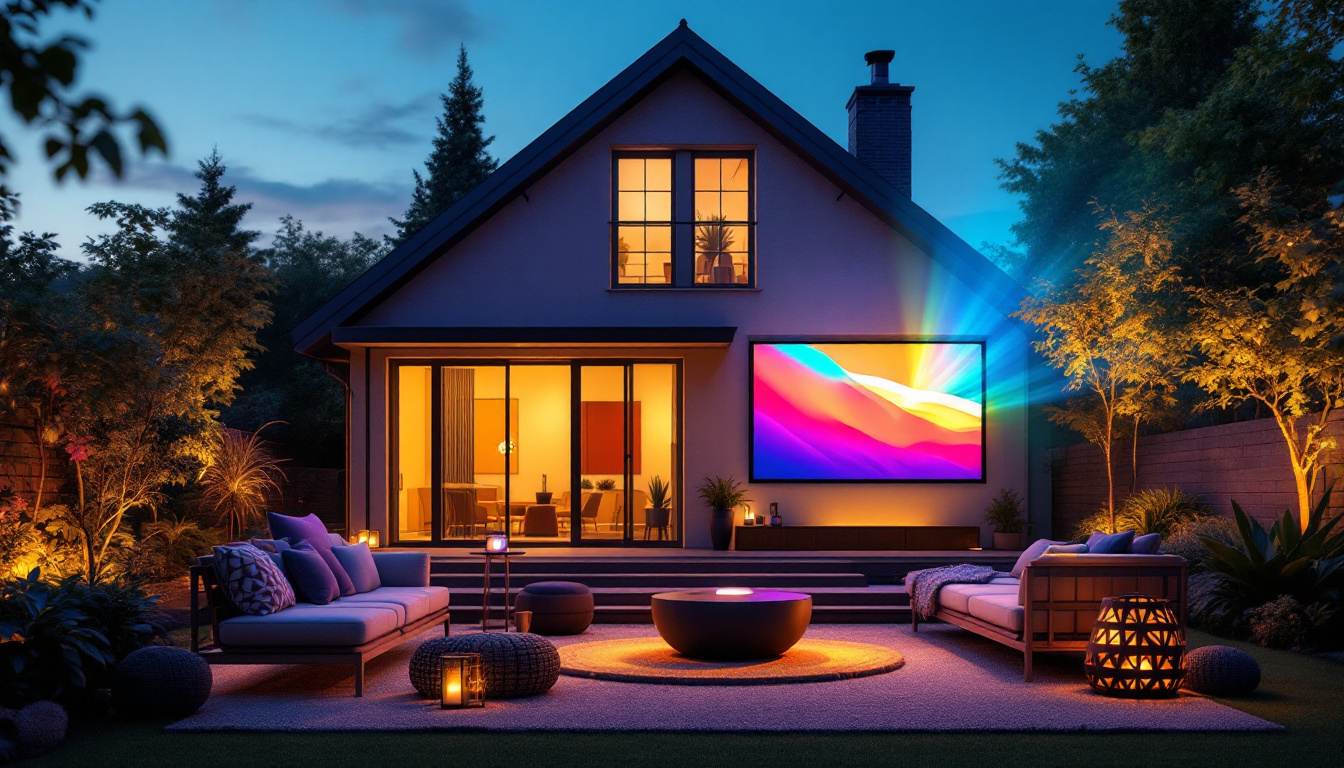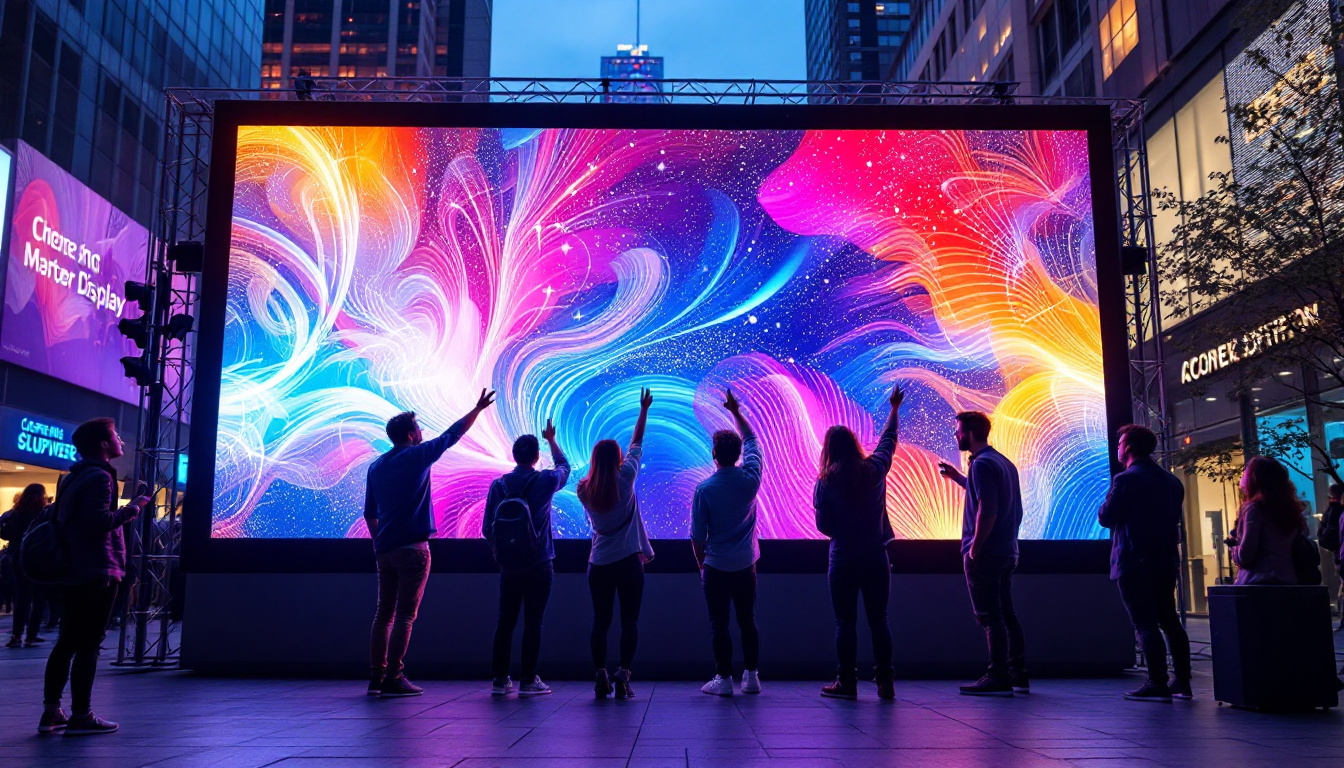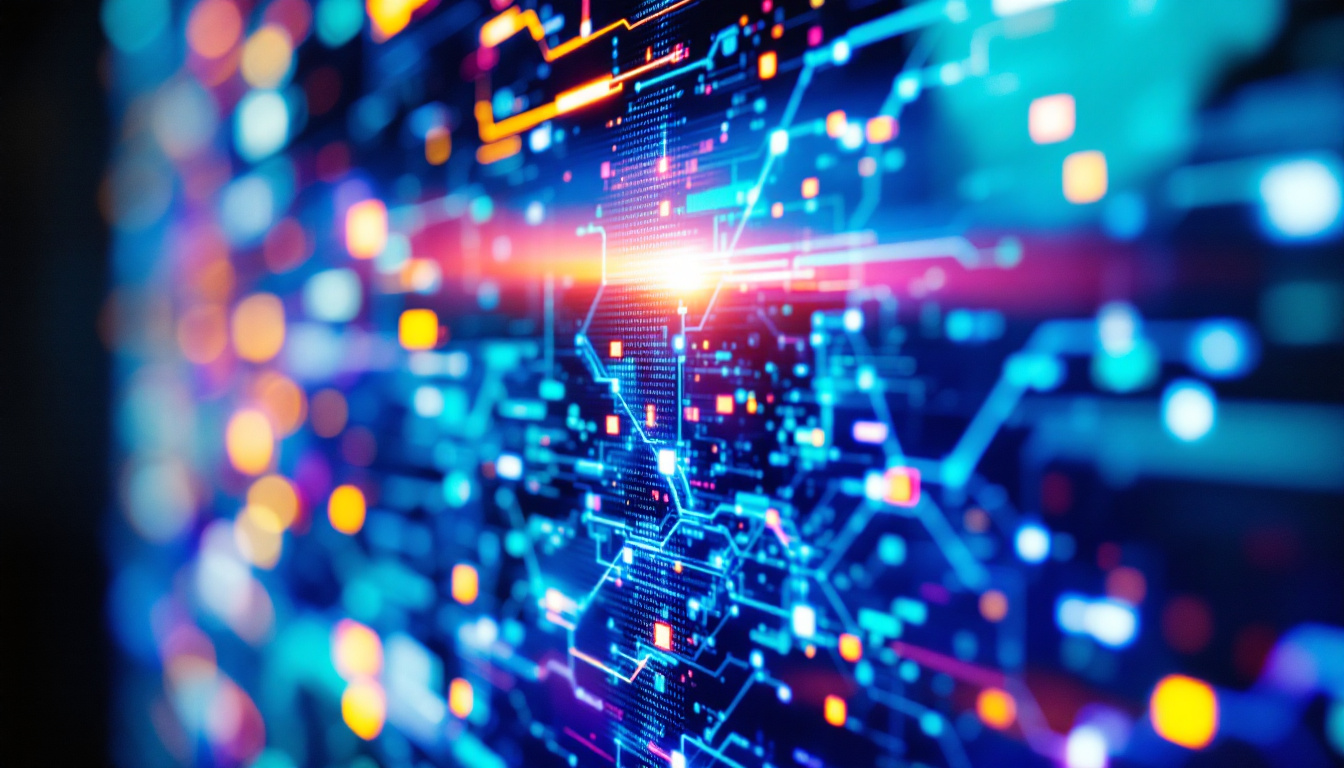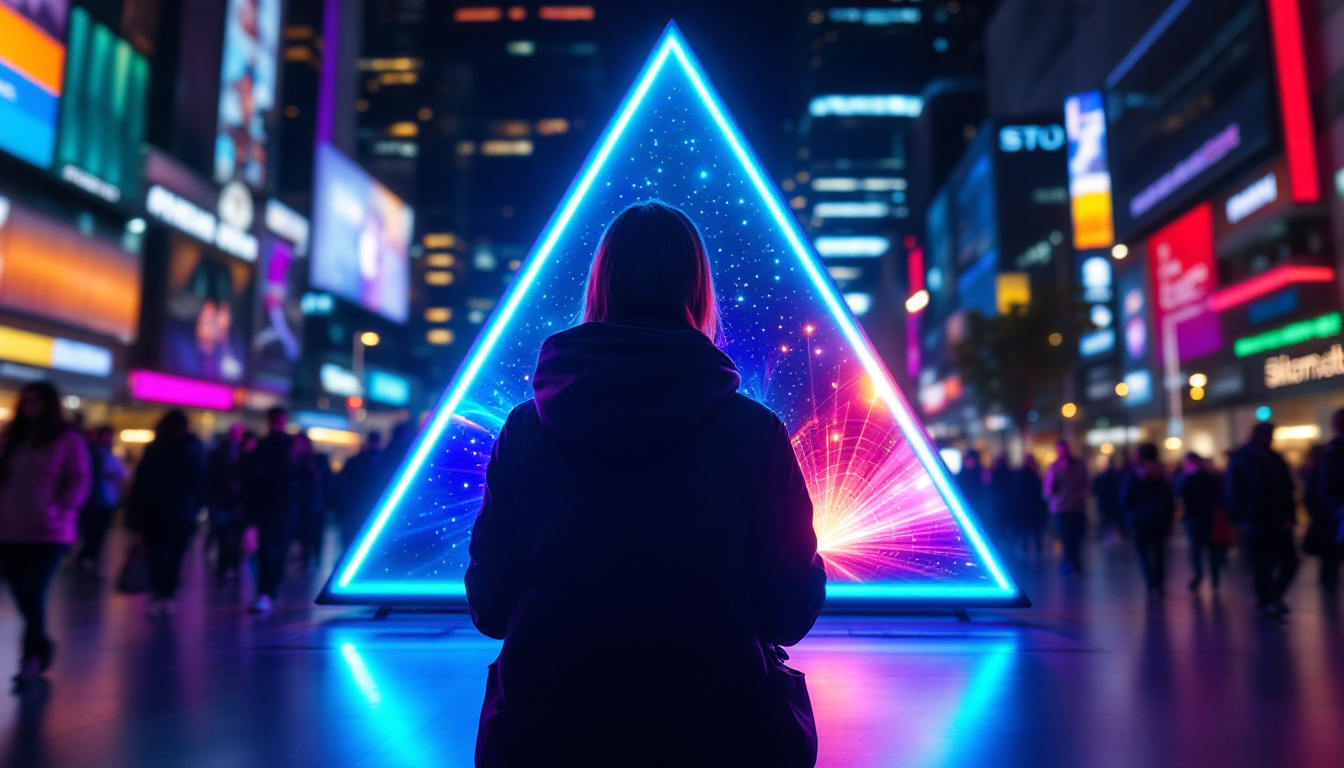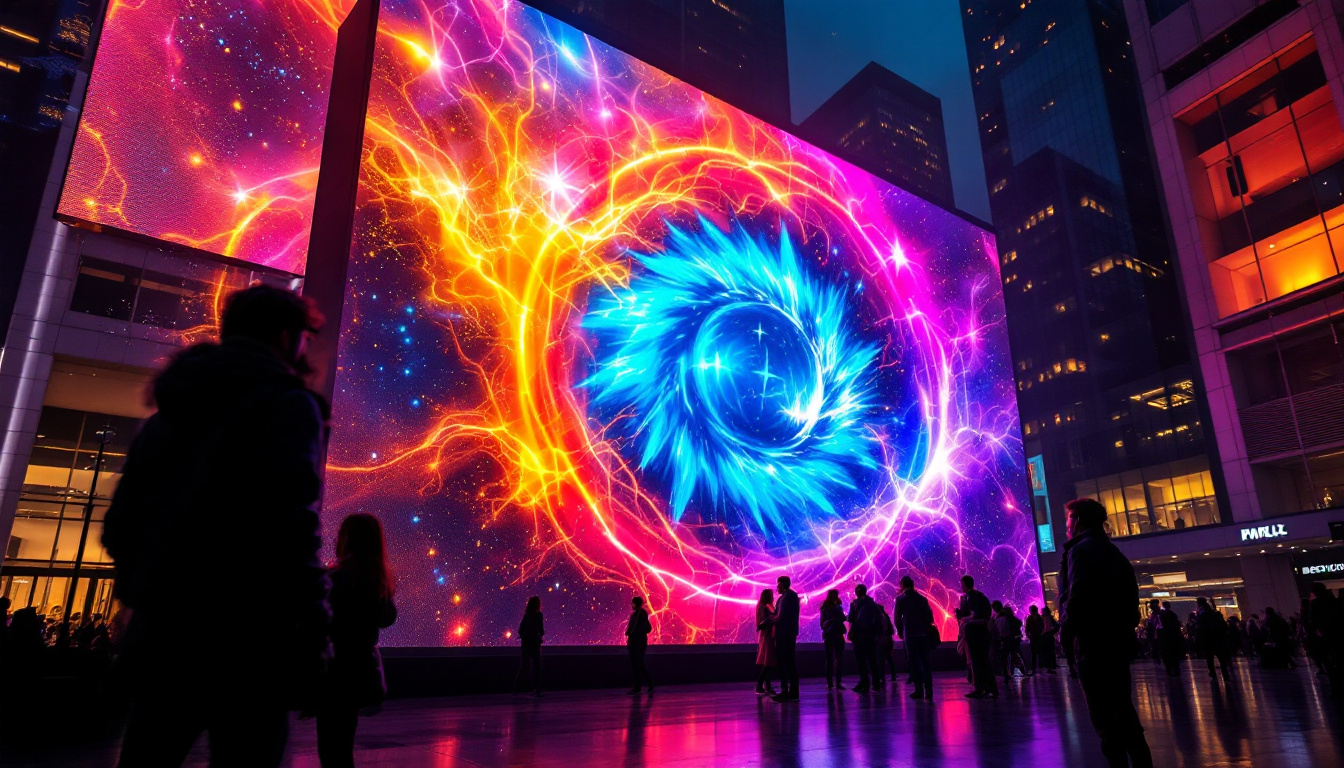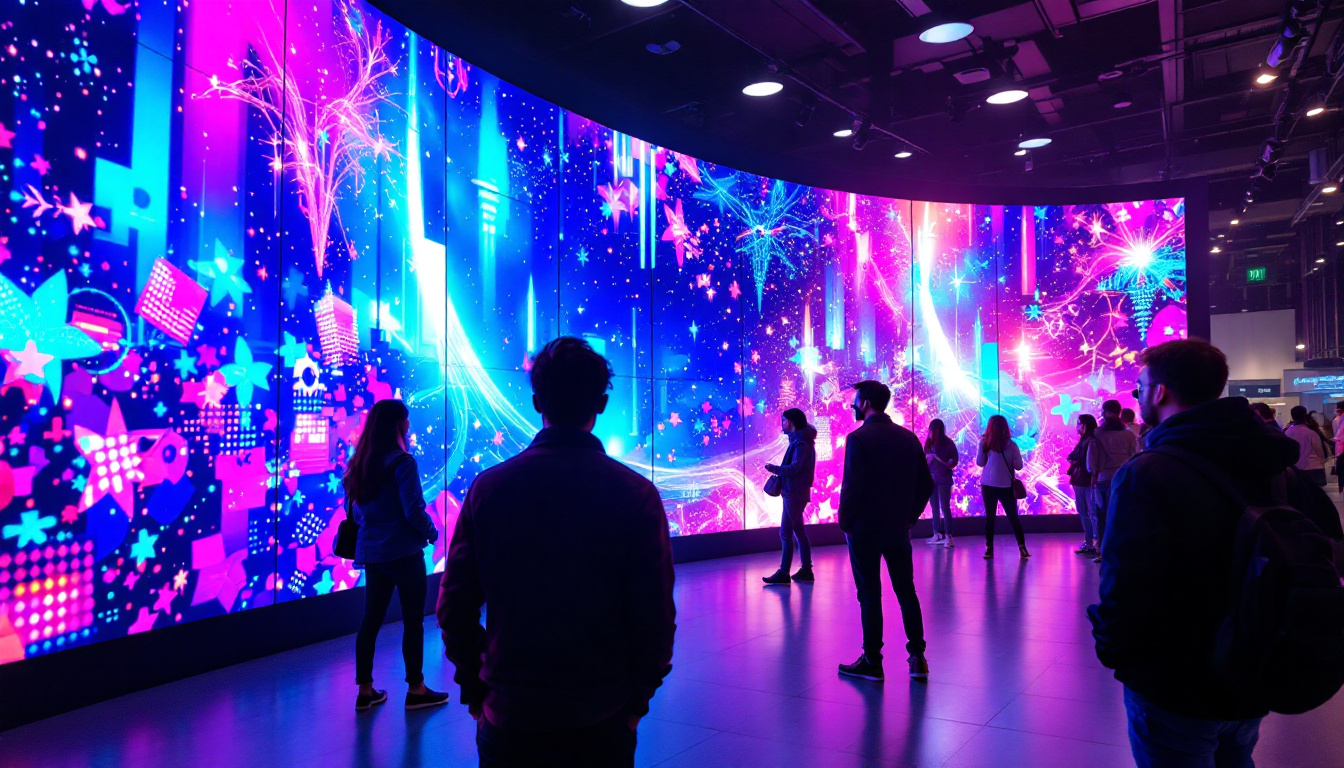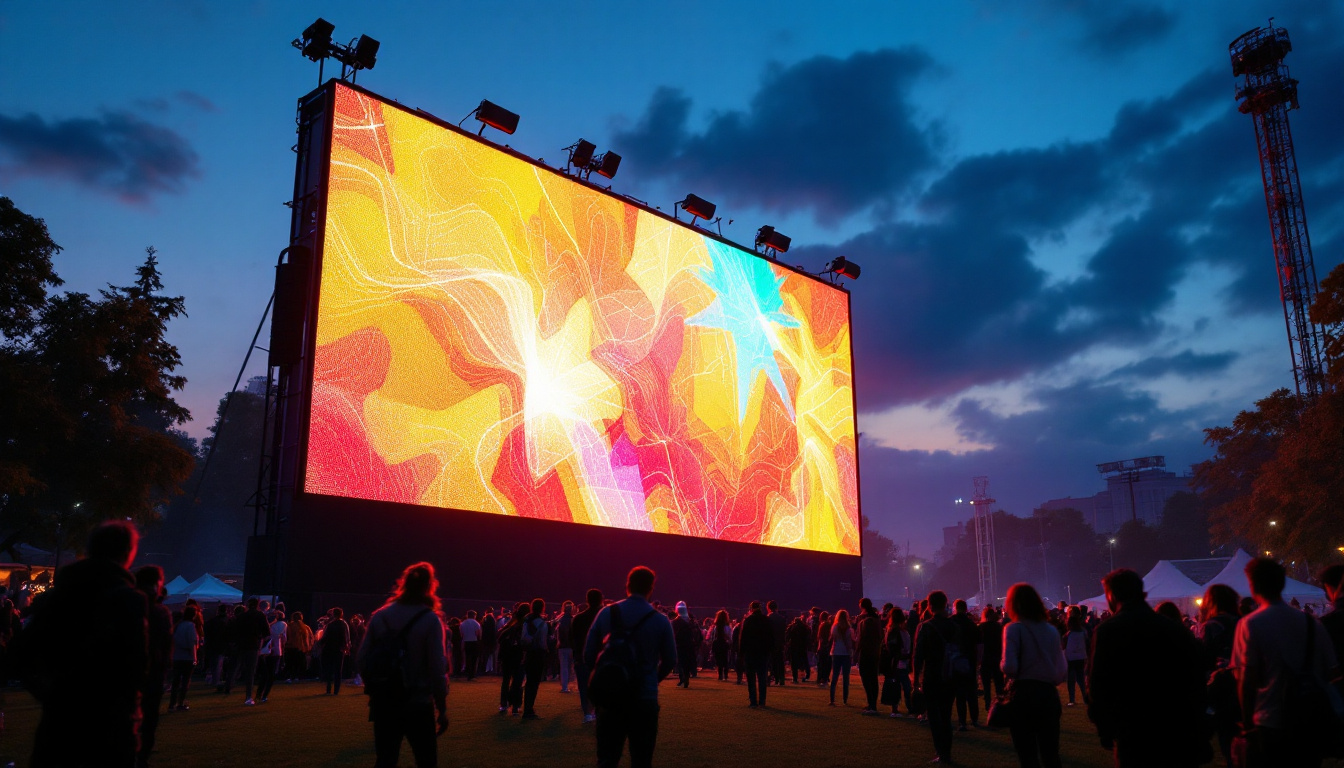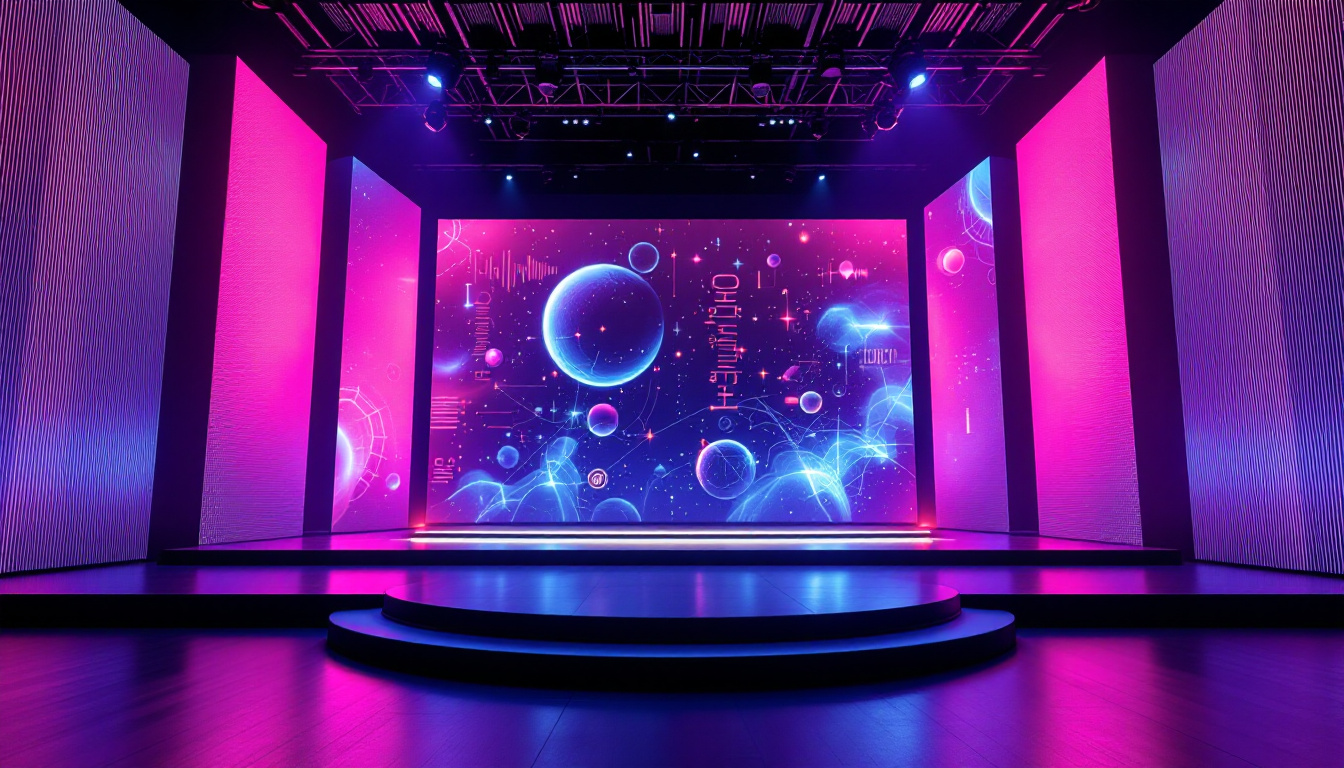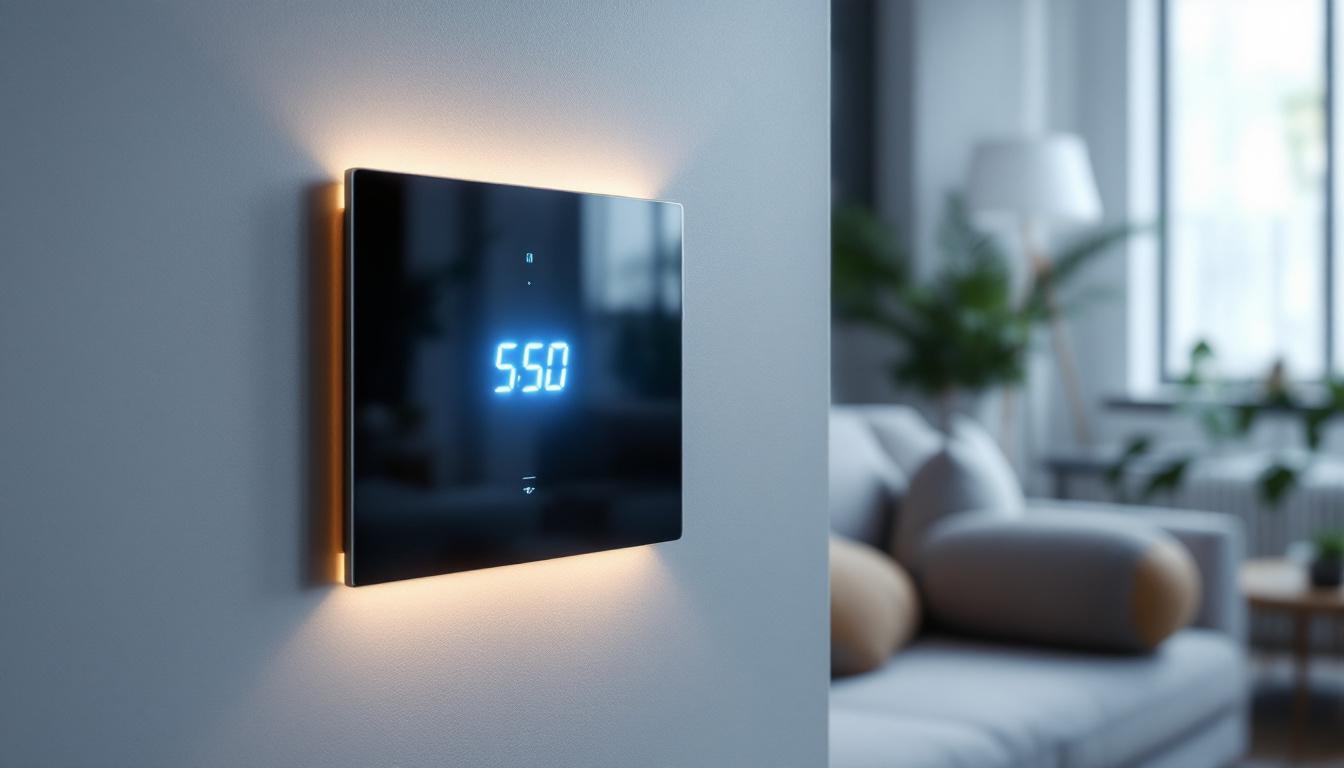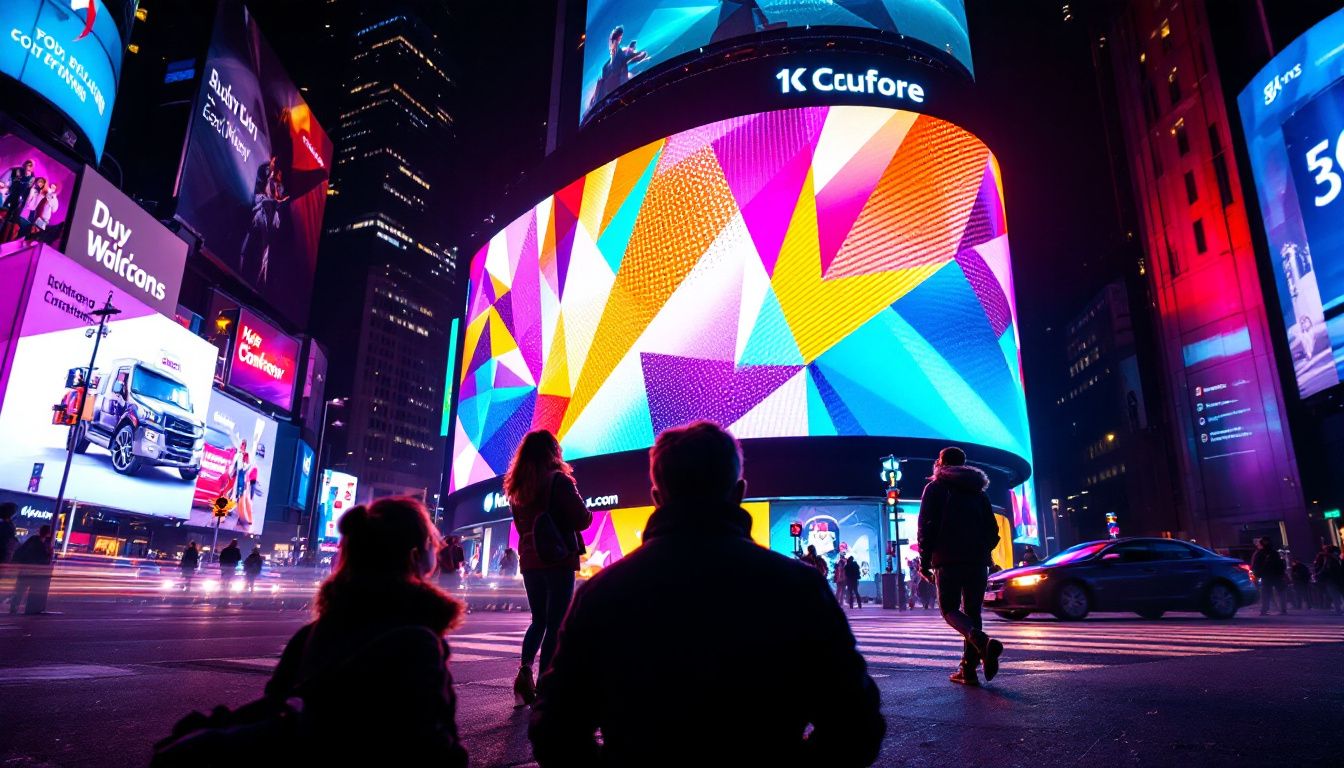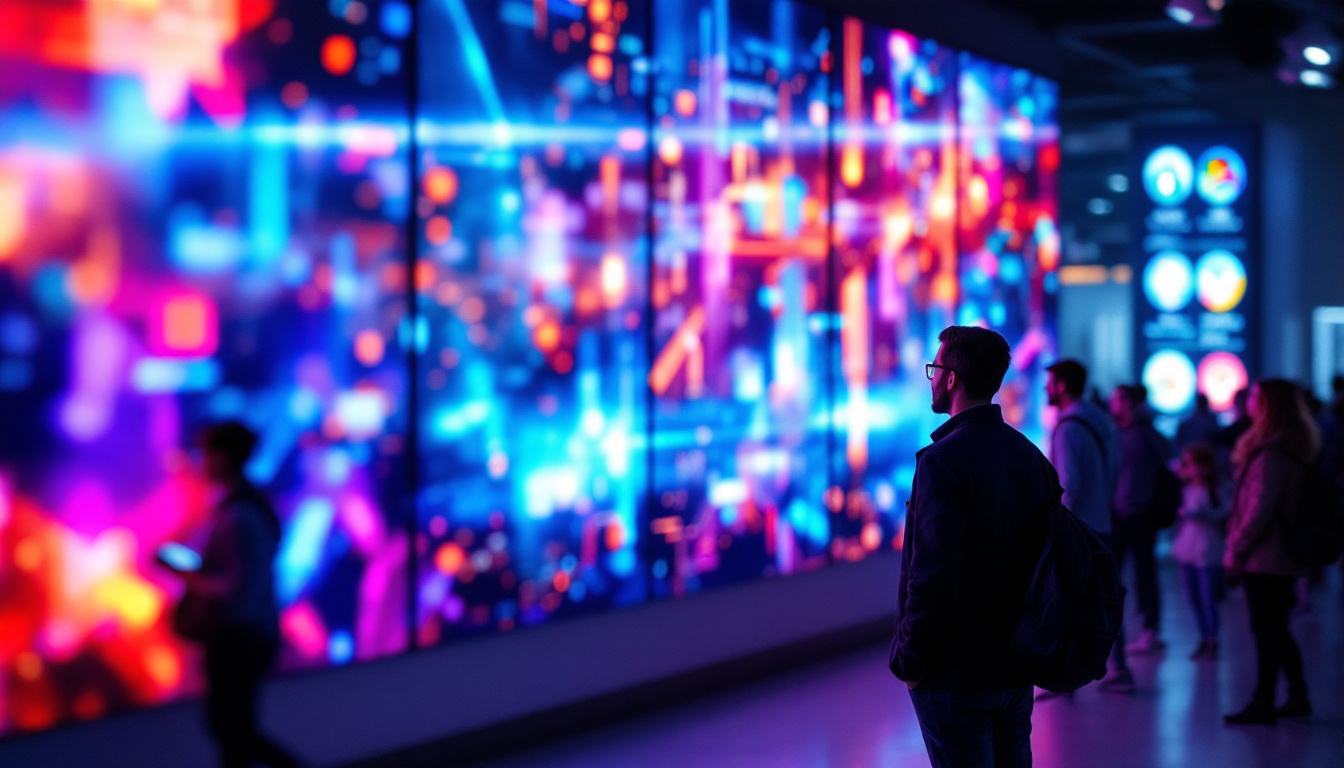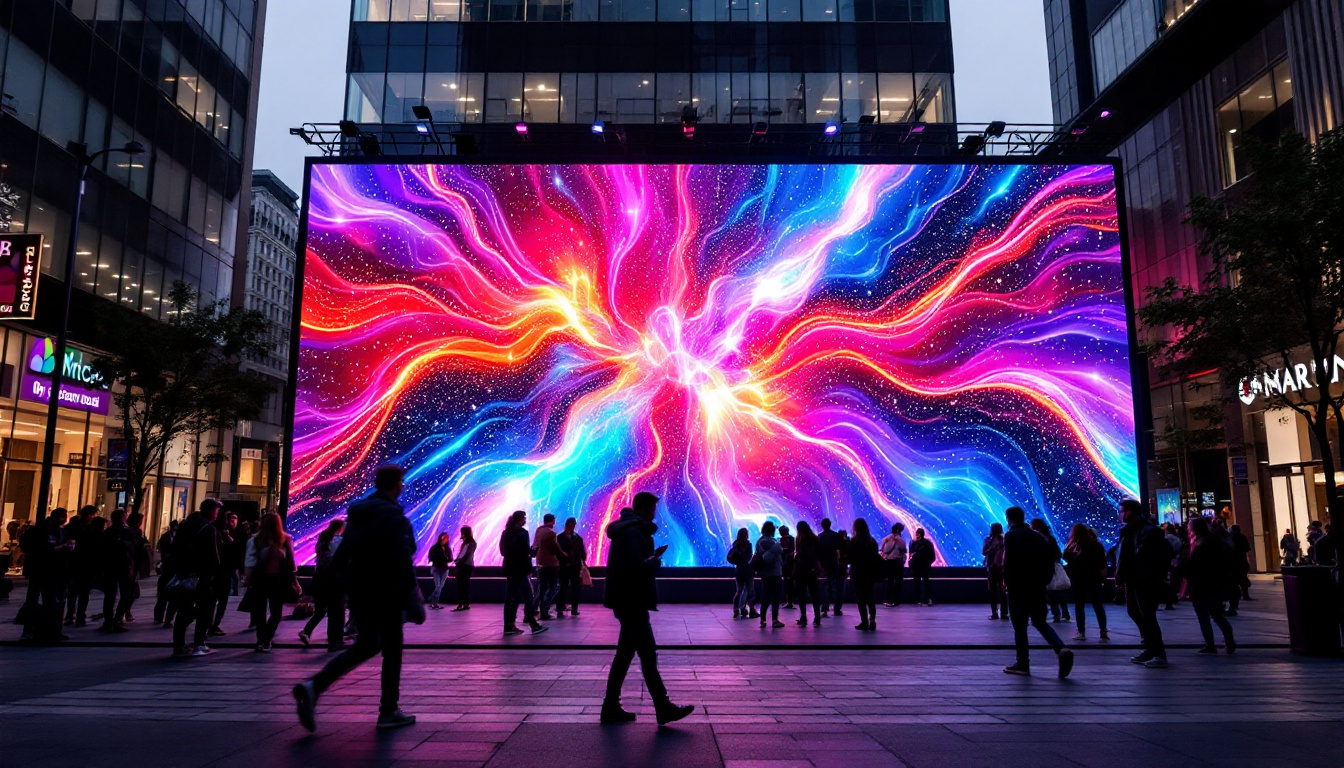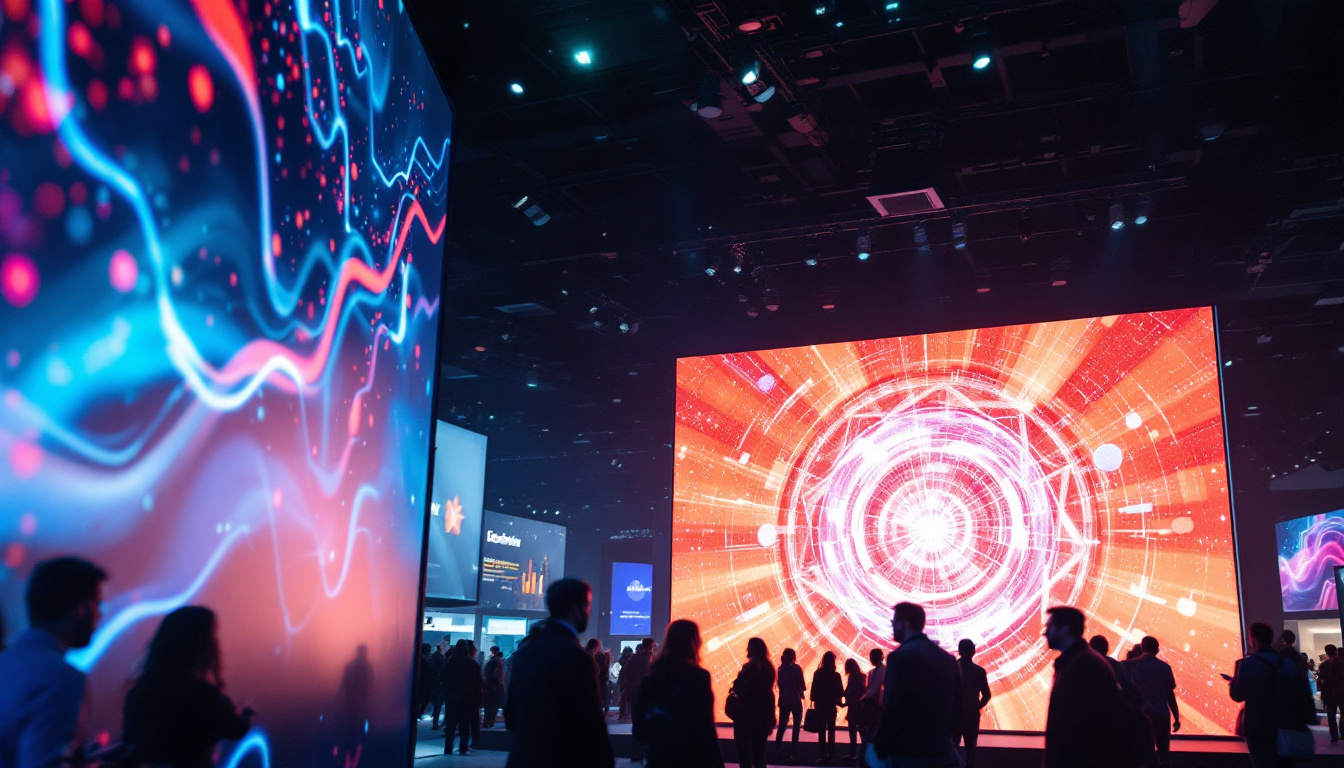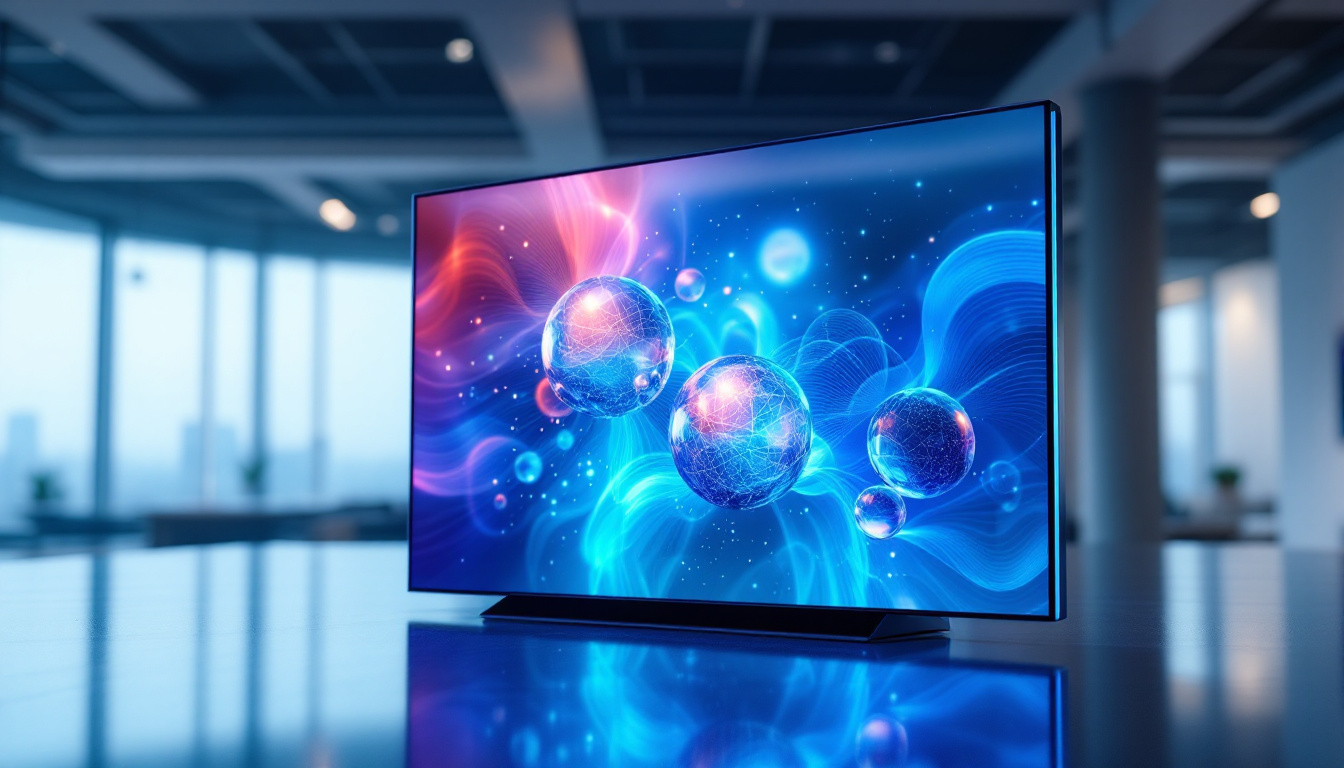In today’s world, visual displays have become an integral part of our everyday experiences. From the small screens on our smartphones to the massive LED displays that light up stadiums and city squares, the technology behind these screens has evolved significantly. Among these innovations, LED displays stand out for their versatility, brightness, and energy efficiency. This article delves into the fascinating world of LED displays, particularly focusing on their application in large-scale environments, such as sports arenas and public events.
Understanding LED Technology
Light Emitting Diodes (LEDs) have transformed the way we think about display technology. Unlike traditional incandescent bulbs, LEDs are semiconductor devices that emit light when an electrical current passes through them. This fundamental difference allows for greater energy efficiency and longevity. As a result, LEDs have not only become a staple in lighting solutions but have also paved the way for innovative applications in various fields, including automotive, medical, and architectural lighting.
The Basics of LED Operation
LEDs function based on a principle called electroluminescence. When electrons move through a semiconductor material, they release energy in the form of photons, which is visible light. This process is highly efficient, allowing LEDs to produce more light per watt than traditional lighting solutions. Additionally, the ability to manipulate the semiconductor materials used in LEDs enables manufacturers to create diodes that emit light in different colors, further enhancing their versatility.
Moreover, LEDs can be combined in various configurations to create displays of different sizes and resolutions. This flexibility is one of the reasons why they have become the preferred choice for large-scale applications. For instance, in the world of entertainment, LED technology has revolutionized stage lighting and set design, allowing for dynamic visuals that can change in real-time, thus enhancing the audience’s experience.
Types of LED Displays
LED displays can be categorized into several types, each designed for specific applications. The most common types include:
- Direct View LED Displays: These are large panels made up of individual LEDs that create images directly. They are often used in outdoor advertising and sports venues.
- LED Video Walls: Composed of multiple LED panels, video walls can create immersive experiences by displaying high-resolution video content across a large surface area.
- LED Backlit Displays: These displays use LEDs to illuminate an LCD panel from behind, providing enhanced brightness and contrast.
In addition to these common types, there are also specialized LED displays designed for niche markets. For example, transparent LED displays are gaining popularity in retail environments, allowing customers to see products behind the screen while still displaying vibrant advertisements. Furthermore, flexible LED displays are emerging, enabling creative applications such as curved screens that can fit into unconventional spaces, enhancing architectural aesthetics and functionality.
As technology continues to evolve, the integration of smart features into LED displays is becoming increasingly prevalent. Many modern LED displays now come equipped with sensors and connectivity options that allow for real-time data integration, enabling dynamic content changes based on environmental factors or audience engagement. This advancement not only improves the effectiveness of advertising but also opens up new avenues for interactive installations in museums and public spaces, making LED technology a driving force in the future of visual communication.
Applications of LED Displays
The versatility of LED technology has led to its widespread adoption in various sectors. From entertainment to advertising, the applications are virtually limitless.
Sports and Entertainment
In the realm of sports, LED displays have revolutionized how fans experience games. Large screens in stadiums not only provide live game coverage but also enhance the atmosphere with replays, statistics, and advertisements. The brightness and clarity of LED technology ensure that every seat in the stadium has a great view.
Beyond sports, LED displays are also prevalent in concert venues and theaters. They can be used to create stunning visual backdrops that enhance performances, making events more engaging and memorable. For instance, many artists now incorporate LED screens into their stage designs, allowing for dynamic visuals that sync with the music, creating an immersive experience for the audience. This integration of technology not only captivates the crowd but also allows for creative storytelling through visuals, elevating the overall production quality.
Advertising and Marketing
Outdoor advertising has seen a significant shift with the introduction of LED billboards. These dynamic displays can change content in real-time, allowing advertisers to target specific audiences and maximize engagement. The ability to display vibrant colors and high-resolution images makes LED billboards more appealing compared to traditional static signs.
Moreover, the energy efficiency of LED displays contributes to lower operational costs, making them an attractive option for businesses looking to invest in advertising. In addition to billboards, LED technology is increasingly being used in retail environments, where digital signage can showcase promotions, product information, and interactive content. This not only draws in customers but also enhances their shopping experience by providing them with timely and relevant information. As consumers become more accustomed to digital interactions, the integration of LED displays in retail spaces is likely to continue to grow, further blurring the lines between physical and digital marketing strategies.
The Advantages of LED Displays
LED displays offer numerous advantages over traditional display technologies, making them a preferred choice for many applications.
Energy Efficiency
One of the most significant benefits of LED technology is its energy efficiency. LED displays consume considerably less power than their LCD or plasma counterparts, which translates to lower electricity bills and a reduced carbon footprint. This efficiency is particularly beneficial for large-scale displays that operate for extended periods. Furthermore, the lower energy consumption not only supports sustainability initiatives but also aligns with the growing demand for eco-friendly solutions in various industries. Many businesses are now prioritizing energy-efficient technologies as part of their corporate social responsibility, and LED displays fit perfectly into this narrative.
Brightness and Visibility
LED displays are known for their exceptional brightness, making them suitable for outdoor environments where sunlight can wash out other types of displays. The high luminance of LEDs ensures that content remains visible even in direct sunlight, providing a consistent viewing experience. This capability is especially crucial for advertising and public information displays, where clarity and visibility can significantly impact audience engagement. Additionally, advancements in LED technology have led to enhanced color accuracy and contrast ratios, further improving the visual appeal and effectiveness of the displayed content.
Longevity and Durability
LEDs have a long lifespan, often exceeding 50,000 hours of use. This durability means less frequent replacements and lower maintenance costs. Additionally, LED displays are more resistant to shock and vibration, making them ideal for high-traffic areas and events. The robust nature of LED technology also allows for a wider range of operating temperatures, ensuring functionality in both extreme heat and cold. This resilience is particularly advantageous for installations in outdoor settings, where environmental factors can pose challenges to other display technologies. As a result, businesses can enjoy peace of mind knowing that their investment in LED displays will provide reliable performance over time, even in demanding conditions.
Challenges and Considerations
While LED displays offer many advantages, there are also challenges and considerations that must be taken into account when implementing this technology.
Initial Cost
The initial investment for LED displays can be higher than that for traditional display technologies. However, the long-term savings in energy and maintenance costs often offset this initial expenditure. Businesses must weigh these factors when deciding on their display solutions. Moreover, the rapid advancement in LED technology can lead to significant price fluctuations, making it essential for companies to stay informed about market trends and potential future savings. This can sometimes create a dilemma for businesses that are eager to adopt the latest technology but are also cautious about making a substantial upfront investment.
Environmental Impact
Despite their energy efficiency, the production and disposal of LED displays can have environmental implications. The materials used in semiconductors and the disposal of electronic waste must be managed responsibly to minimize ecological impact. Companies are increasingly focusing on sustainable practices to address these concerns. For instance, many manufacturers are exploring ways to recycle old displays and reduce the use of hazardous materials in production. Additionally, the rise of circular economy initiatives encourages businesses to consider the entire lifecycle of their products, promoting designs that are easier to repair, upgrade, or recycle. This shift not only helps in mitigating environmental damage but also aligns with the growing consumer demand for eco-friendly products.
Future Trends in LED Display Technology
The future of LED display technology is promising, with ongoing advancements that aim to enhance performance and expand applications.
MicroLED Technology
One of the most exciting developments in the field is MicroLED technology. This innovation involves smaller LED elements that can create even higher resolutions and more vibrant colors. MicroLED displays are expected to find applications in everything from televisions to wearable devices, offering unprecedented visual experiences.
Integration with Smart Technology
As smart technology continues to evolve, LED displays are becoming increasingly integrated with IoT (Internet of Things) systems. This integration allows for real-time data display, interactivity, and personalized content delivery. For instance, smart LED displays in retail environments can adapt their content based on customer behavior, enhancing the shopping experience.
Conclusion
LED displays have become a cornerstone of modern visual communication, offering a blend of efficiency, brightness, and versatility. Their applications span various sectors, from sports and entertainment to advertising and beyond. While challenges exist, the benefits of LED technology often outweigh the drawbacks, making it a preferred choice for businesses and organizations.
As technology continues to advance, the future of LED displays looks bright. With innovations like MicroLED and smart integrations on the horizon, the potential for even more engaging and dynamic visual experiences is limitless. Whether in a bustling city square or a packed stadium, LED displays will continue to captivate audiences and enhance experiences for years to come.
Illuminate Your Space with LumenMatrix
Ready to elevate your visual experience with the latest in LED display technology? LumenMatrix is at the forefront of innovation, offering a wide array of LED display solutions tailored to your needs. From vibrant Indoor and Outdoor LED Wall Displays to dynamic Vehicle and Sports LED Displays, our products are designed to captivate and engage. Discover the transformative power of our LED Poster Displays, Floor Displays, Custom Solutions, and more. Embrace the future of visual communication with LumenMatrix and make a lasting impression. Check out LumenMatrix LED Display Solutions today and see your vision come to life.

